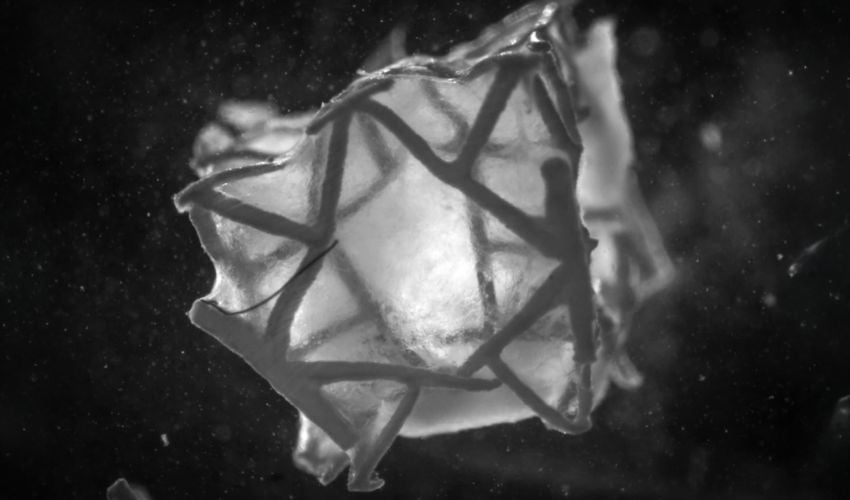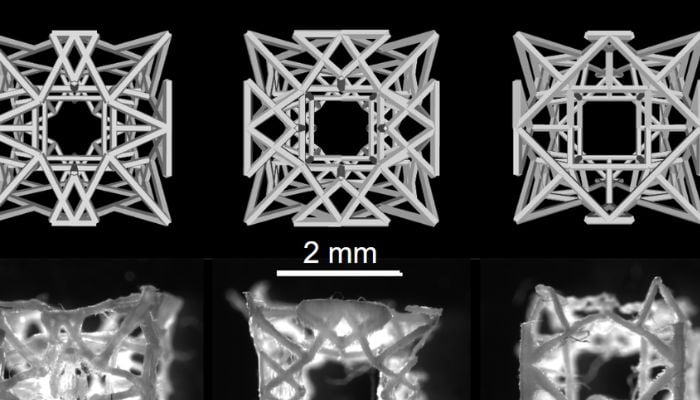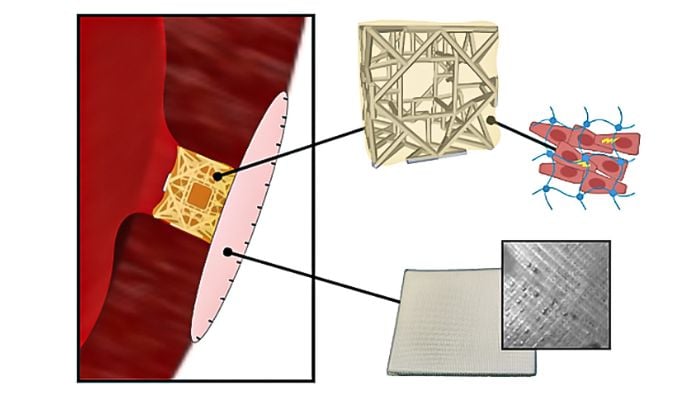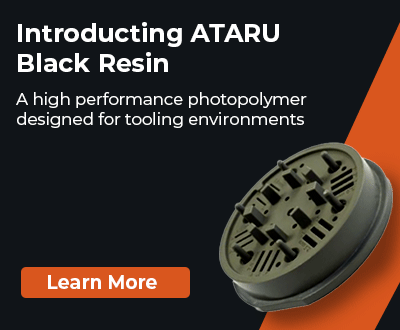A New Heart Patch Was Made From a 3D Printer at ETH Zurich

An interdisciplinary research team led by Professor Robert Katzschmann (ETH Zurich) and Professor Omer Dzemali (University Hospital Zurich) has introduced a promising innovation in medical technology known as the “RCPatch,” a three-dimensional, tissue-integrating heart patch that not only seals defective areas of the heart chamber but also actively contributes to their regeneration.
In current medical practice, heart defects following a heart attack are treated with bovine pericardium patches (BPPs). While these are stable and easy to implant, they are biologically inactive and remain permanently in the heart as foreign bodies. They carry risks such as calcification, thrombosis, or inflammation. The research team at ETH Zurich set out to develop a biologically active patch that fully integrates into heart tissue.

The lattice structure of the ‘patch’ from three perspectives
One Patch With Three Components
The RCPatch is composed of three coordinated components: a fine-mesh sealing net that lies directly over the defect, a 3D-printed support scaffold consisting of a lattice structure made of biodegradable polymers, and a hydrogel designed to promote tissue growth, which is populated with living heart cells. The lattice structure is produced using 3D printing and filled with hydrogel, which is also applied to the net. Once the patch is implanted in the heart, it fuses with the surrounding tissue. The support scaffolding then fully dissolves over time, leaving no foreign material behind.
In preclinical studies using pig models, the RCPatch successfully sealed an artificially induced defect in the left ventricle. The implantation procedure was straightforward, and the patch withstood high blood pressure. In addition, it prevented bleeding and contributed to the restoration of heart function, making it far more promising than the bovine pericardium (BPP) patches commonly used today.
Promising Outlooks
The promising results provide a solid foundation for further development toward clinical application in humans. The researchers aim for a long-term goal of creating an implantable, mechanically reinforced, tissue-based heart patch for the treatment of myocardial damage. However, achieving this will require extensive evaluations. According to the researchers, the next phase involves long-term animal studies to thoroughly analyze the device’s overall stability and regeneration.

A schematic diagram showing how the patch is applied
With the RCPatch, heart surgery could not only mechanically close defects but also promote the healing of active tissue. The combination of sealing, mechanical stability, and biological integration makes the concept unique. If this new device proves successful in further studies, it would be a major step toward regenerative therapies for heart disease. More information can be found HERE.
What do you think of this innovative heart patch? Let us know in a comment below or on our LinkedIn or Facebook pages! Plus, don’t forget to sign up for our free weekly Newsletter to get the latest 3D printing news straight to your inbox. You can also find all our videos on our YouTube channel. Interested in more medical and dental 3D printing news? Visit our dedicated page HERE. Interested in more medical and dental 3D printing news? Visit our dedicated page HERE.
*Cover Photo Credit: ETH Zürich






